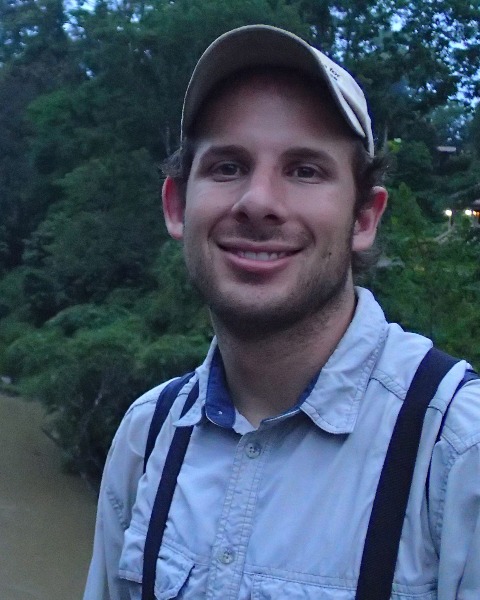Back
Contributed Talk
Session: : Climate Change: Communities 1
COS 7-5 - Towards a mechanistic understanding of the interactive effects of heat and land cover on bird reproduction
Monday, August 7, 2023
2:30 PM - 2:45 PM PDT
Location: C125-126
- KL
Katherine S. Lauck
PhD Candidate
UC Davis WFCB
Davis, California, United States - KG
Katia Goldberg
UC Davis, United States

Daniel S. Karp, Ph.D.
Associate Professor
UC Davis
Davis, California, United States
Presenting Author(s)
Coauthor(s)
Abstract: Habitat loss to anthropogenic disturbance is the primary driver of species loss and endangerment. Efforts to increase biodiversity in working landscapes, such as installing nest boxes for cavity-nesting birds, may allow more species to thrive in human-dominated landscapes. However, as climate change progresses, human-dominated landscapes may expose birds to new temperature extremes because converting land to agriculture removes trees that insulate the understory from ambient temperature. Our previous work has found that, across species and geography, bird nests in agricultural areas are more likely to fail during high temperature anomalies than those in forest. However, the mechanisms linking high temperature anomalies to reduced reproductive output in agriculture remain unclear. We expect two main mechanisms to play a role in decreasing growth and survival of nestling birds: increased thermoregulatory energy demands and reduced food provisioning to nestlings. Furthermore, we expect that in more exposed land covers, such as row crop agriculture and grassland, increased thermoregulatory demands may play a larger role, while in agricultural land covers such as row crop and orchard, reduced food supply may be more important.
To test this hypothesis, we established a network of over 200 nest boxes distributed across row crop, grassland, orchard, and riparian forest in California’s Central Valley and monitored Tree Swallow and Western Bluebird nestlings during April-August 2021-2023. We monitored internal and external nest box temperature, weekly individual growth, weekly corticosterone response, weekly parental food delivery rates, and survival over 232 nesting attempts. We will build a structural equation model to trace the direct and indirect effects of air temperature through land cover type, nest box temperature, corticosterone response, food delivery rates, growth, and ultimately nestling survival to fledging. So far, we have demonstrated that nest box internal temperatures are warmer in more open land covers such as row crop and grassland, supporting our hypothesis that thermoregulation challenge may play a larger role in reducing growth and survival in open land covers. Our findings will suggest concrete avenues through which working landscapes in the Central Valley could be modified to better accommodate birds as climate change continues to warm the landscape. If the direct effects of heat predominate, providing shade trees in agriculture or modifying nest boxes to reduce their internal temperature may increase nestling resilience. If food-mediated effects are more important, maintaining patches of non-crop habitats in working landscapes to support food resources and provide thermal refuges for parents may be effective.
To test this hypothesis, we established a network of over 200 nest boxes distributed across row crop, grassland, orchard, and riparian forest in California’s Central Valley and monitored Tree Swallow and Western Bluebird nestlings during April-August 2021-2023. We monitored internal and external nest box temperature, weekly individual growth, weekly corticosterone response, weekly parental food delivery rates, and survival over 232 nesting attempts. We will build a structural equation model to trace the direct and indirect effects of air temperature through land cover type, nest box temperature, corticosterone response, food delivery rates, growth, and ultimately nestling survival to fledging. So far, we have demonstrated that nest box internal temperatures are warmer in more open land covers such as row crop and grassland, supporting our hypothesis that thermoregulation challenge may play a larger role in reducing growth and survival in open land covers. Our findings will suggest concrete avenues through which working landscapes in the Central Valley could be modified to better accommodate birds as climate change continues to warm the landscape. If the direct effects of heat predominate, providing shade trees in agriculture or modifying nest boxes to reduce their internal temperature may increase nestling resilience. If food-mediated effects are more important, maintaining patches of non-crop habitats in working landscapes to support food resources and provide thermal refuges for parents may be effective.
